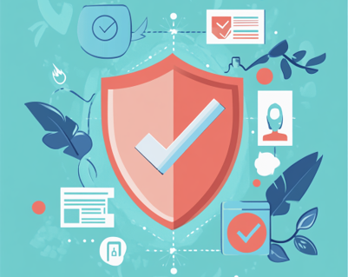A Foundation Built on Solid Policies
At the heart of good safeguarding is a well thought out and evidence based policy framework. Policies must define abuse and neglect clearly, based on current legislation and best practice, and be reflective of the real life situations our clients and staff face. Policies must be comprehensive and adaptable to meet changing needs.
Collaboration is key when developing policies. By involving our frontline care workers and clients we make sure policies are practical and directly informed by lived experiences. This helps fine tune safeguarding measures to be relevant and effective.
Training is another cornerstone of good policy. At DBAM we believe in continuous professional development where regular training sessions enable staff to act decisively in safeguarding situations. These sessions using real life scenarios and case studies bridge the gap between theoretical knowledge and practical application so our teams are well prepared to identify and respond to risks.
Clear and accessible reporting procedures are equally important. Every member of the care team must feel confident to report concerns confidentially and promptly without fear of retribution. A transparent reporting system builds trust and makes safeguarding an ongoing practice not a one off.
Proactive Risk Management in Action
Risk management in community care must be proactive not reactive. Anticipating potential hazards and addressing them before they escalate is crucial. Regular risk assessments should cover all aspects of the care environment from physical spaces to interpersonal dynamics between staff and service users.
In domiciliary care where workers often work in isolation ensuring reliable communication and clear emergency protocols is key. Technology such as secure mobile apps has been successfully integrated into safeguarding measures to enable instant contact with emergency services and real time reporting of concerns.
But technology alone is not enough. Creating an open and vigilant culture encourages staff to share their observations and concerns freely. When staff feel heard and supported they are more likely to contribute to a safe and secure working environment. Open conversation helps identify potential risks early and reinforces we are all responsible for safeguarding our communities.
Safeguarding is not a one off. The social care landscape is constantly changing and our risk management strategies must change with it. Regular audits and a willingness to update procedures based on new evidence or incidents means our safeguarding measures will remain effective and relevant.
Building a Culture of Trust and Empowerment
Effective safeguarding goes beyond just having policies and procedures; it needs to be a fundamental part of an organization’s culture. At DBAM, we are dedicated to creating an environment where everyone feels safe, respected, and valued. Strong, empathetic leadership is essential in establishing the right tone for safeguarding. Leaders in social care should exemplify transparency, integrity, and a firm commitment to safety. By mentoring and supporting our teams, we nurture a culture where safeguarding is seen as a collective responsibility and a point of professional pride.
Communication is another key element of a secure environment.
Regular team meetings and interdisciplinary case reviews offer chances to share insights, tackle challenges, and collaboratively develop solutions. Open communication about safeguarding practices reassures clients and their families, building trust in the care process. Collaboration is central to effective safeguarding. By engaging clients in feedback sessions and adjusting safeguarding measures based on their input, we ensure our approach is responsive to the changing needs of those we serve. This inclusive strategy not only strengthens safeguarding practices but also enhances the overall quality of care.
Embracing innovation is crucial as well. Advances in digital record-keeping and secure communication platforms allow us to monitor, report, and address safeguarding concerns more effectively. However, it’s vital that these tools are used with the utmost respect for privacy and dignity.
Our Commitment to Excellence in Safeguarding
At DBAM, we view safeguarding as a continuous journey of learning, adapting, and growing together. By integrating strong policies, proactive risk management, and a culture of trust and collaboration into our daily practices, we can create care environments that not only protect but also genuinely empower individuals. Our dedication to safeguarding is fundamental to everything we do. It is an integral part of our mission.






